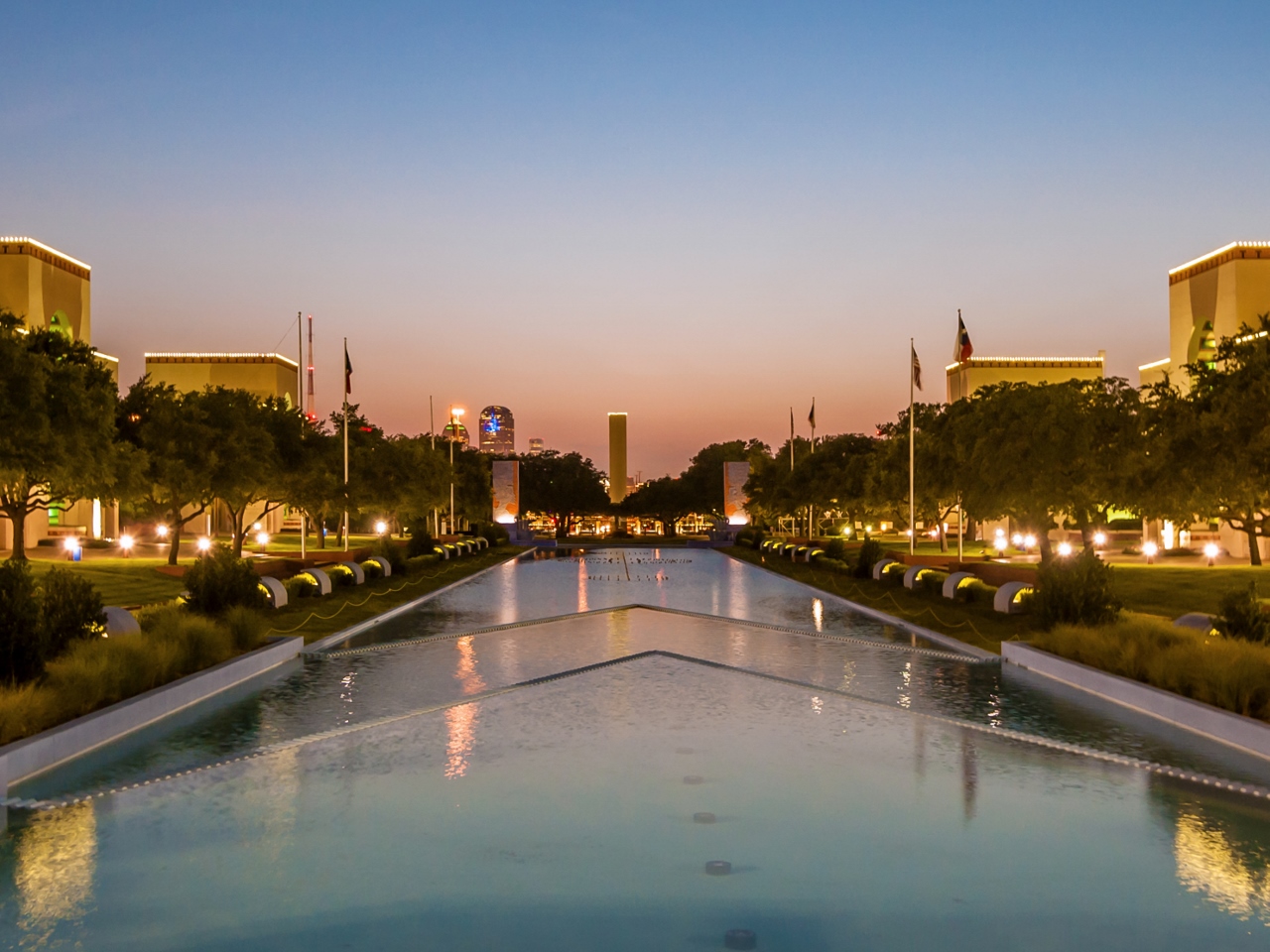Fair Park’s long and complex storyline is a vital piece of Dallas’ history and an integral part of its future. A previous suggestion to consider the possibility of accepting its demise was woefully shortsighted and unimaginative. Fair Park is a gem that must be polished and repositioned as a year round destination for citizens and tourists. If well executed, such a plan could put Dallas on par with truly world class, international cities.
As has been widely noted, Fair Park can be an asset to the surrounding community by embracing its neighbors. This will not be successfully achieved within the framework of plans presented thus far. The challenges facing the neighborhoods involve issues that must be met with solid, comprehensive community and economic development strategies coupled with thoughtful land use, housing and transportation policies. Dallas is not there yet.
Undoubtedly, Fair Park is a diamond in the rough that has almost limitless potential. Refurbished, intelligently and strategically repurposed historic buildings alone would create a tourist destination with reach beyond the United States and further elevate the city’s international stature. This requires the city, and even the region, to change the perspective on Fair Park’s importance and potential. All possibilities have not been adequately considered and vetted. Consequently, the brightest possible future has yet to be imagined and conceptualized. It absolutely must become a regional destination to succeed. It should be positioned as national destination and international attraction. The sky is truly the limit.
Efforts to create a better management structure may lead to better governance, but this should only be viewed as the first step of many needed to envision and catalyze the most transformational future possible. The challenges and possibilities presented by Fair Park requires the city of Dallas, and appropriate regional stakeholders, to build creative partnerships and develop the kind of plan this region has never seen. While regional stakeholders should be included in a strategic manner, regional interests should not dictate outcomes. Fair Park has the potential to be an integral part of the region’s future.
Comprehensive, strategic efforts must produce a plan that outlines and details the creation of a destination that appeals to and secures the support of all stakeholders and consider the establishment of additional attractions. Such efforts might include and consider the following:
Identify and achieve the buy-in of a well-rounded group of stakeholders:
- Surrounding communities
- City of Dallas
- Business community
- Local, national and international philanthropists
- CityLab High School
- Dallas County Community College District
- Local school districts
- Dallas County
- Dallas Area Rapid Transit
- State and federal government
- Appropriate national foundations
Create and cultivate new and existing attractions:
- Art & Sculpture Gardens w/accompanying school
- Music Museum
- Music School
- Partnerships with industry professionals utilizing local industry heavy hitters
- Film School/Production Studios
- Annual Dallas Film/Music/Theater, etc. awards highlighting local talent
- “Fair Park Center” that houses various activities:
- Specialized industry specific summer programs for junior high, high school and college students that align with internships with participating companies.
- Annual July 4th Fireworks “Extravaganza On The Lawn” (on an adequately designed park/lawn/green space)
Urban Planning & Design:
- Local and international search for capable and experienced professionals
- Intelligent housing, land use and transportation policies
- Mitigate separation from surrounding neighborhoods
- Creative funding mechanisms (state and federal funding sources, tax increment finance and public improvement districts)
- Creation of functional, strategic park land
- Structured parking (with flex space on ground levels) & underground parking
- Adequate internal and external signage
- Create seamless connection between Fair Park and downtown
- Relocate I-30
- Create grand park/front door
To achieve the above, it would serve the city well to cast a wide net across the world for best practices and examples that represent serious, thoughtful community and economic development, urban design and planning. An endeavor of this scale and complexity has never been attempted in this region. An immensely bold, comprehensive, and progressive vision must be created and coupled with a strategic plan that frames a comprehensive effort to create the path to success. Then, all stakeholders must aggressively pursue it with a non-wavering and prolonged commitment. Above all, the best interests of the city as a whole, and the surrounding neighborhoods in particular, must be kept at the forefront.
In addition, a successful plan should create the foundation for a re-imagined Fair Park that blends into a thriving downtown, which itself is beautifully linked to an undeniably world-class Trinity River Corridor. Then, all stakeholders must also commit to this grand scheme to carry the plan forward and making it happen. This will be a decades-long endeavor and will require local, state, federal, philanthropic and private dollars.
Impressive commercial and residential development would blossom and Dallas would cement its rightful place as the true center of this region and a true international attraction, but housing, community and economic development, land use and transportation policies must evolve to facilitate much of this. The city of Dallas, and the region, would both benefit. Not many cities could match such an accomplishment, but Dallas, the ‘can do city’, has a proven history of tackling formidable challenges. The region’s business community must also step up to this plate. First, an attractive, visionary menu needs to be created. The city must forge a new vision of itself and a real plan that lays the foundation for a path to a truly visionary outcome and think big.
Mike Grace is the managing principal of Metro Development Consulting.






